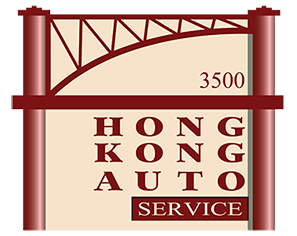Low tire pressure warnings waking up your mornings? Here's the 411
After months of sweltering summer heat, these cooler fall days are a welcome relief to many of us. But when it comes to our cars, rapid changes in temperature can trigger a troubling dashboard warning light: A glowing orange or red low tire pressure indicator.
 The good news is: Your car is doing exactly what it’s supposed to, and the fix is about as easy and cost-free as it gets.
The good news is: Your car is doing exactly what it’s supposed to, and the fix is about as easy and cost-free as it gets.
Here’s what’s happening:
- All 2008 and newer vehicles, as well as many 2006 and 2007 model year cars and trucks, are equipped with a Tire Pressure Monitoring System (TPMS), which alerts you when the air in your tires drops about 25 percent beneath the recommended specification. (Some vehicles will trigger the light at less than a 25 percent drop in air pressure.)
- For every 10 degrees the ambient air temperature changes, your tire pressure will fluctuate about 1 psi. If you or your auto shop last set the tire pressure when it was 95 degrees outside, imagine what it drops to when the overnight temperatures fall into the mid 40s. Your tire pressure could be changing 4-5 psi while you’re getting your Zzzzzs, which leads to that glowing orange morning greeting from your dashboard.
- To reclaim your mornings, check and adjust your tire pressure in the morning before you drive more than a few miles and before the heat of the day begins to falsely bump the psi back up. (TireRack.com offers an in-depth explanation about the sun and daytime temperatures affecting your tire pressure.)
- In most vehicles, your TPMS light will turn itself off once you’ve properly inflated the tires. (You may need to drive for a few minutes or miles first. Every vehicle is different.) However, if your light is persistent, Hong Kong Auto Service can help. Stop by anytime. We’ll make sure the system is operating properly, and we can reset the light for you. In most cases, we can reset the light in just a couple of minutes. In other cases, we may have to go through a series of steps, including meeting specific driving conditions. There may be a nominal fee involved in those instances. But don’t delay because underinflated tires mean lower fuel economy, reduced safety and faster tire wear.
Think requiring Tire Pressure Monitoring System’s (TPMS) in all vehicles is a bit overprotective on the government’s part? You may want to think again. A June 2012 study by the Rubber Manufacturers Association reports that more than 80 percent of vehicles on our highways have at least one underinflated tire, which reduces safety and handling, increases fuel consumption, and wears out the tires faster.
